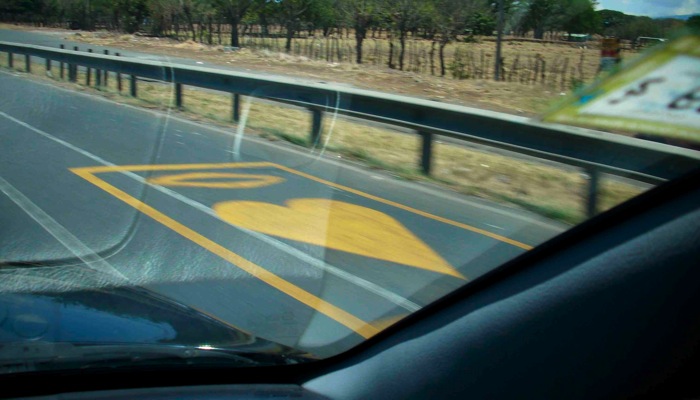
Yellow hearts
As you drive in Costa Rica, especially in the metropolitan area, you’ll notice a large yellow heart with a halo over it spray painted on the road. These yellow hearts mark the spot where a person died after being run over by a vehicle. There are hundreds of these hearts. The government started the yellow heart campaign in 2005 to raise awareness of pedestrian fatalities. During the first trimester of that year, 25 pedestrians had already died. Last year, more than 50 died. Pedestrians account for 57% of all road deaths in Costa Rica. Imprudence of pedestrians is the official reason given for the high statistical figure. Pedestrians would rather cross in the middle of the street than at the corner; they would rather outrun cars in the highway than use the pedestrian bridges; they sometimes walk in the middle of the road. I remember reading, in the early 80s, about a lady who was run over by a bus. She was standing on the corner of a downtown sidewalk. The newspaper blamed the poor old lady, saying she was killed because she wasn’t paying attention. Not the slightest blame on the bus driver who went on the sidewalk as he turned right. Pedestrian bridges also have dangers. Plenty of people have been assaulted in those long, enclosed passageways. Police now patrol some of the pedestrian bridges, but I’m sure a woman who has to catch a bus on the other side of the highway might feel more in control running across traffic. A blogger in salidaalternativa.ticoblogger.com commented that he saw a dog crossing the pedestrian bridge in Hatillo while right below, a woman with her 3-year-old kid dodged cars. Many pedestrians do have the attitude of “me la juego” (“I’ll take the chance”), but it’s also true that pedestrians never have the right of way, many roads don’t have sidewalks or even shoulders, there’s poor or no lighting at night, and bus stops are in the middle of dangerous highways.
Friday, April 10, 2009